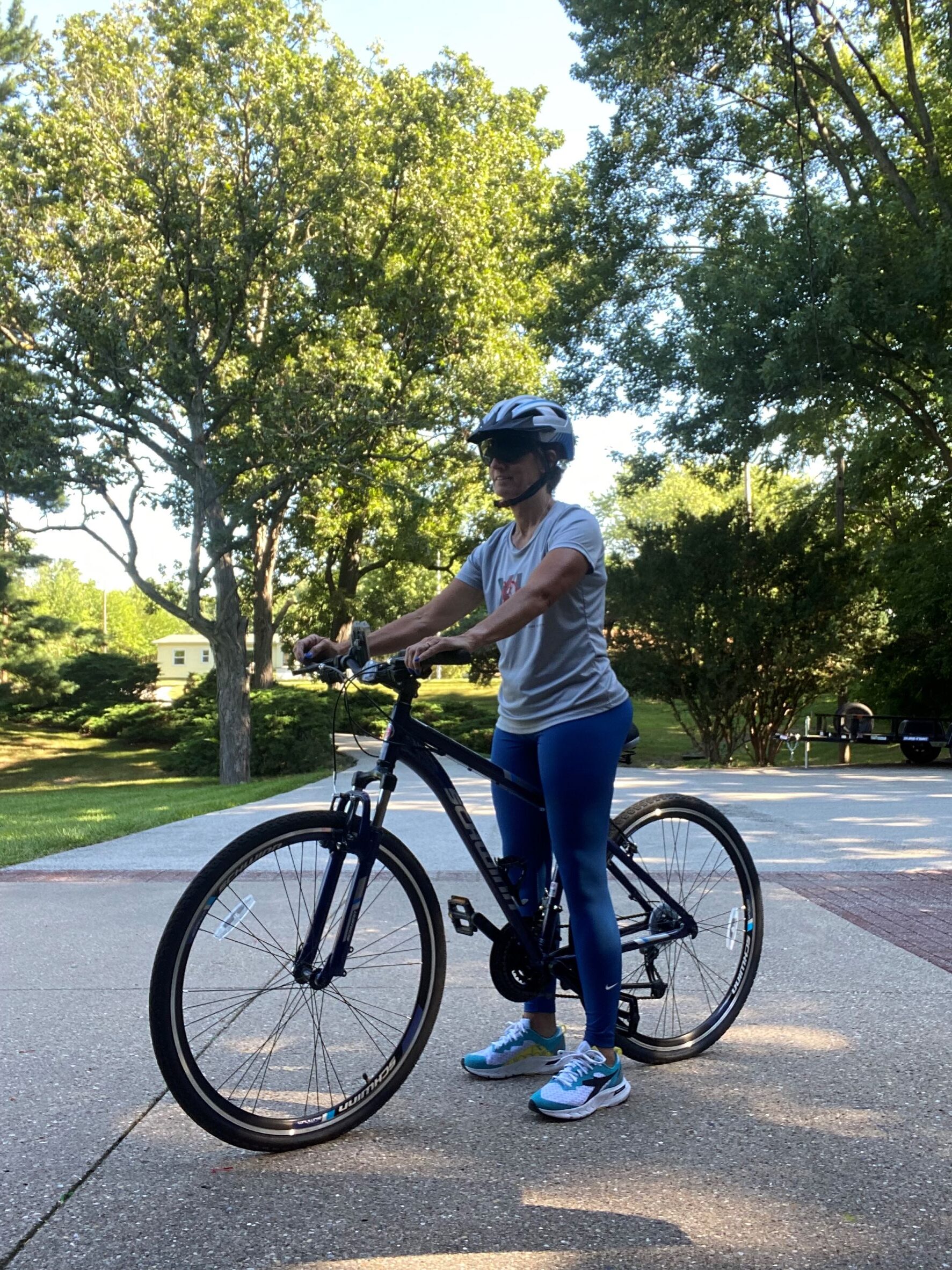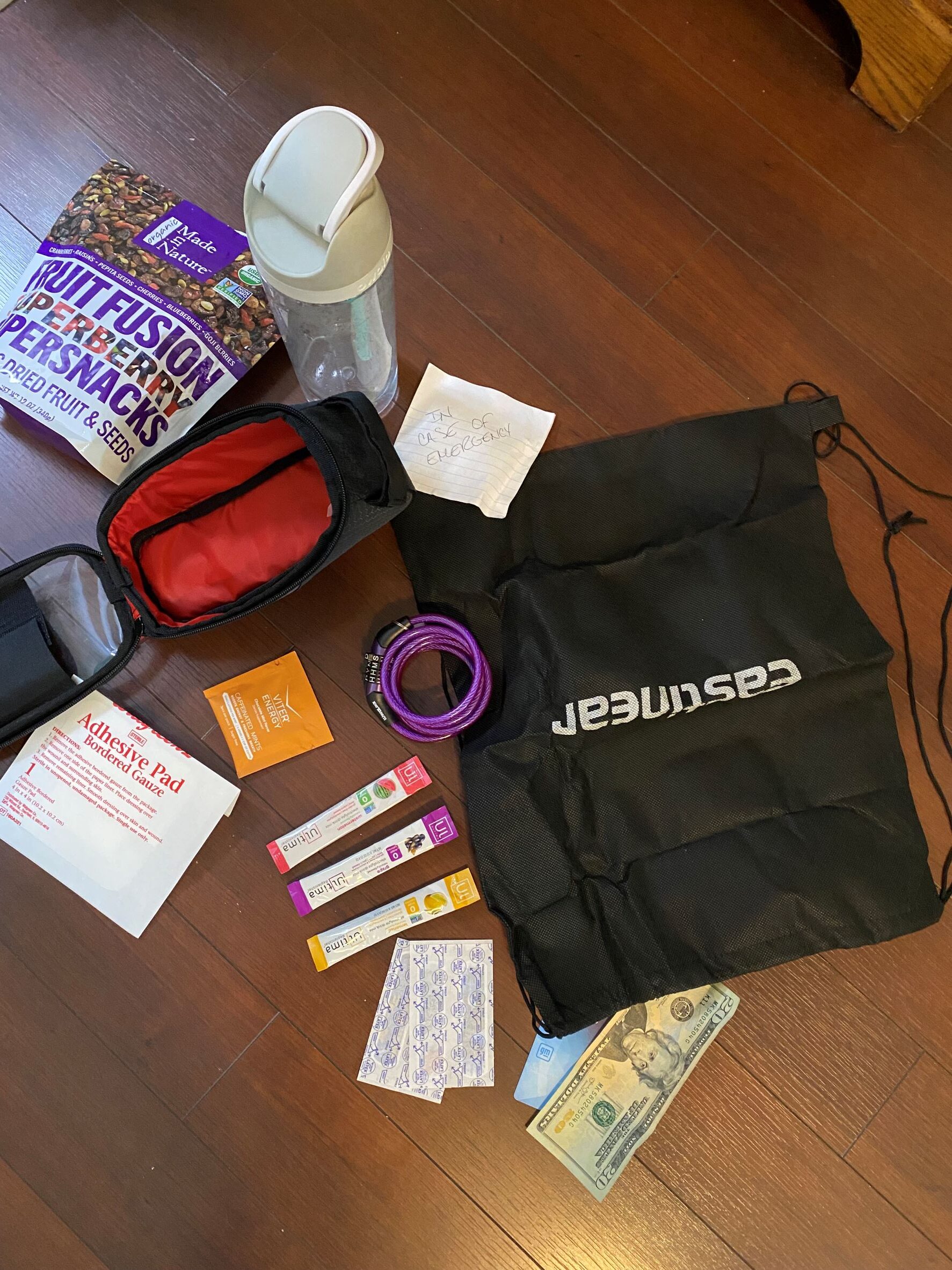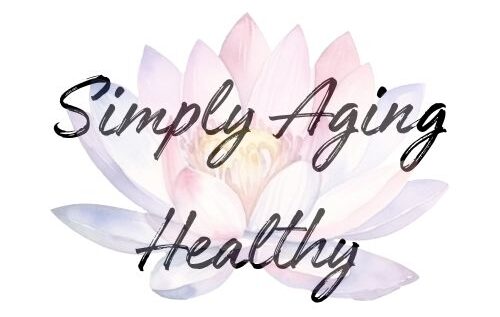Should New Bicycle Riders Over 60 Ride Alone? (Is It Safe To Ride Solo?)
“Don’t be scared to ride alone and don’t be scared to like it. Sometimes you have to get lost to find yourself”
Most riders, whether they are new riders or seasoned athletes, have a personal preference when it comes to riding in a group or riding solo.
For some of the group riders it is the competition and push that it gives them to ride longer or faster. While others just love the socialization and coffee stops to catch up on what is happening in everyone’s life.
Other riders, like me, enjoy the solo ride. We just want to hit the open road alone to gather our thoughts and work through the stresses of the day. My rides sometimes produce the best solutions to my problems and/or ideas for other issues that are on my mind.
A solo ride is the best way to decompress without worrying about keeping up with others or listening to everyone’s issues. That may sound selfish but sometimes it is okay for us to be a little bit selfish for our own personal growth.
I do get the usual questions from friends and family asking me if it is safe to ride solo.
My answer is always YES!
Bicycling alone as a newbie can be scary and exciting all at the same time.
A solo ride may take a little extra planning because you don’t have anyone else to depend on if you need help.
So how do we stay safe out on the road alone?
These 9 safety tips for cycling alone can help you to mentally and physically make safe habits and a sound plan for bicycling solo.
9 Tips For Safe Solo Ride
1. Let Someone Know When You Go For A Ride.
Before you go out on a ride let someone know you’re leaving.
It just takes a second to call or text a friend, your spouse, your kids, a co-worker or anyone else that you can rely on.
If you live with someone and you don’t want to wake them before your early morning ride, then leave a note with what time you left and when you plan to return.
Make sure to plan out your route before you leave and share this with the person you contact. If you usually make a stop, do they know where that is?
Maybe just send a text if you stop to let them know that you are on target for your return or if you plans changed.
If you get caught up in your ride and you want to stay out longer, stop and call that person with an update.
Just because you ride alone doesn’t mean that you have to be completely alone.
This will help you to feel more at ease that someone knows where you are.
2. Carry Your Cell Phone
Take your cell phone along with you on the ride. Please don’t plan to talk on your phone or text while you are riding but have it available in case, you get in trouble.
Anything can happen even with the best plans. You could get a flat tire, have a fall (it sucks but it happens especially as we age), become ill or something worse.
If you have a smartphone, which seriously most of us do! Make sure that you share your location. This can be turned off after your ride if you find it a little creepy that people always know where you are.
But sharing your location will help if you don’t arrive at your designated time. Someone knows where you may be.
You never know, if you crash and hit your head or something even worse you have someone that can locate you.
This will give you and them a peace of mind.
3. Take ID and In Case Of Emergency Contact
Always be sure to have ID on you. If something does happen and you’re alone this can help someone to figure out who you are.
Don’t depend on your cell phone for this. Cell phone normally have a pass code that a complete stranger is never going to guess.
So, if you’re counting on someone to get into your phone and find your In Case of Emergency (ICE) person or your health records it’s probably not going to happen.
Keep this information written down on a hard copy and store it some place such as your helmet or in your bike pouch on your bike.
I have a pouch on my handlebars that I keep my phone and emergency info in.
When I used to run, I invested in a bracelet that had my name and address on one side and my “in case of emergency” person on the other. This is also a great option.
If your ICE is accessible someone can give them a call.
This can be extremely important if you are unable to call someone yourself.
4. Plan Your Route
Take a minute before you go to map out a safe route. If you ride early do this the night before.
I personally use an app on my phone to map out my rides before I hop on my bike.
The app that I use is Strava, it has been wonderful. It tells you how far the ride is and possible stops along the way. It also tells you what kind of roads you will ride on.
If it is dark, you may want to stay away from dark bike trails.
This may be the time that you consider riding on the busier streets. Just make sure that your lights and reflectors on your bike are in good working order.
During the daylight you may want to consider riding on trails or roads where other people are out walking, riding or running at least you know that someone it around if you need help.
If it is rush hour you may want to stay off of the busy streets and take a quieter route to avoid getting hit by a driver that is pre-occupied or in a big hurry to get to their destination.
5. Change Up Your Routine
Do you ride the same route at the same time on the same days? I know that this is something many of us do. We are all creatures of habit.
It also prevents us from having to take time every ride to map out our destination.
When I used to run, I was that person. I ran the same route Monday through Friday at 5 am. I did it for the convenience. I knew how far I was going and did not have to think about what route to take.
It was perfect! Or was it?
I have a job that requires travel. So, our company would do in-services on different topics including safety
At one of our in-services a police officer spoke to us. Most of us were middle aged women. He asked us if we stuck to a schedule. He then started talking about the dangers of being a creature of habit and how this makes us vulnerable and easy prey for the wrong people.
WOW! What a eye opener that was! How stupid was I?
He encouraged us to change up our routine and pay more attention to our surroundings.
It was a lesson that I never forgot.
Since that day I do not go on the same route at the same time on the same days.
6. Service Your Bike
Do you schedule regular maintenance on your bike?
Do you make sure to clean it often? This can prevent rust or gunk from damaging your bike chain, brakes and gears.
Check your tires before your ride. Are they in good condition? Do you have the right air pressure in your tires?
Are your gears, brakes and lights all working.
Is your safety equipment such as lights working? Do you have reflectors on your bike?
Know your bike and how to do quick repairs if needed. There are small repair kits that you can throw on your bike in case you need to do a small repair.
7. Be Sure to Have Safety Items On You and Your Bike
Safety equipment is very important when riding especially when riding alone.
Number one for me is my helmet. Make sure that it is no cracked and that it fits properly.
Mirrors on your bike. Are they adjusted correctly? Can you see the cars and people behind you? I use my mirrors every time I ride. I want to make sure that cars are moving away from me, and I also want to know where people are around me. Am I being followed? Is someone watching me a little too closely?
Clothing – are you dressed for the weather? If it is hot, are you covered properly to prevent sunburn and heat stroke? If it is raining, do you have on rain gear?
Cell Phone – do you have your cell phone on you? Is it in a convenient location so you can grab it if needed?
Bottle holder for your water. Make sure that you take water with you when you ride!
Repair kit – do you have a small repair kit in case you need to do a quick repair?
Bike Lock – this may prevent a very expensive loss of you bike if you make a stop. Take a minute to lock your bike up you never know who is watching you and it may only take seconds for your bike to be stolen.


8. Take A Credit Card Or Cash With You
Make sure to carry a credit card or cash. Either on your watch or in your bike pouch.
You never know if you will need to make a stop maybe for water or a protein bar to get you through the ride.
You may even need it if you want to stop at a local bike shop for a repair of your bike or for a new piece of equipment.
Make sure that you have some cash or credit with you in case you need it.
9. Follow The Rules Of The Road
Make sure that you are familiar with the rules of the road for cycling.
Do you know your hand signals?
Do you ride on the correct side of the road?
Do you know how to correctly pass people?
Following the rules of the road can help make it safe to ride solo. As a new rider the rules can be challenging but there is a reason that the rules are made.
Summary
So, is it safe to ride solo? It absolutely can be it just takes a little planning.
Take your time and plan your ride. Make sure that you are prepared because there is no one for you to lean on for help.
It’s just you and your bike.
I have found a true love for the ride!
I am sure you will too!
